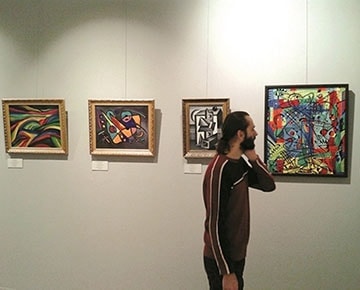Your Modus Vivendi defines you, via certain rules and statutes, but how does it apply to artists? Even a modest exhibition can reveal an answer, as is evident in the works on show by Vladimir Providokhin. His watercolours and pencil and ink sketches, created over the past three decades, show his compulsions and his creative evolution.
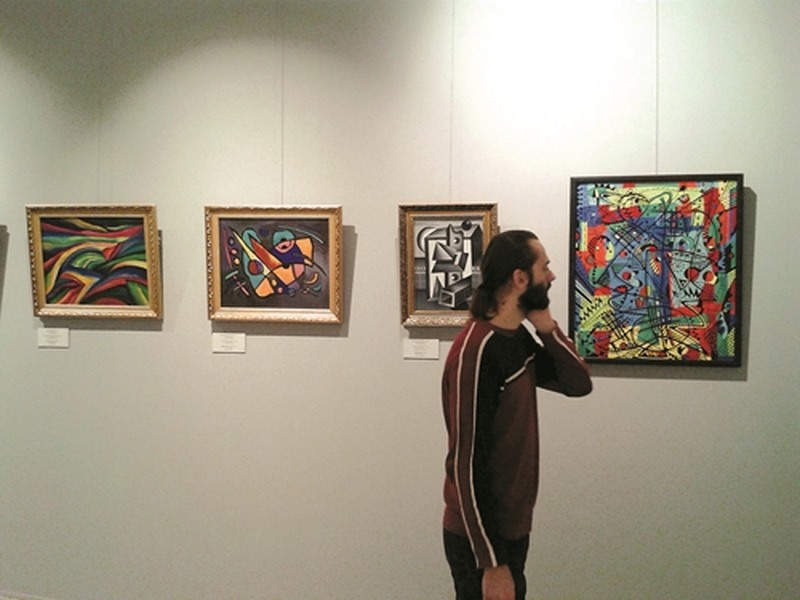
Mr. Providokhin’s Eternal Return watercolour is a perfect example of his meticulous style, with a large portion of the canvas covered in tiny specks of colour, as if reflected in a prism. His detailed depiction of abstract forms and his ornate handwriting are distinctive. It’s understandable that the work took a whole year to complete.
However, the canvas demonstrates more than his technical skills and the beauty of pure geometry. His use of shape, colour, lines and finely proportioned structures present the complex cycle of life, and the interaction between the Micro and Macro Cosmos. In this way, he explores the metaphysical basis of existence.
In this sense, the art of Vladimir Providokhin is intellectual, as has been noted many times by critics and art historians. He offers a conversation not so much in terms of traditional art analysis, but in terms of philosophy. The Cosmos, Universe, and ‘crossroads of worlds’ are an invisible reality in his artistic world.
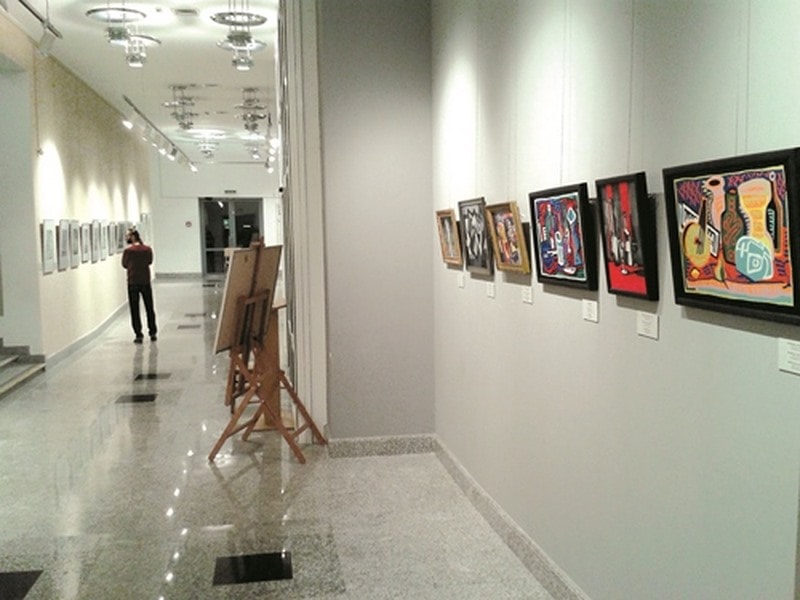
Vladimir Providokhin’s creative diversity
The series presented at the current exhibition completely demonstrates this way of thinking: the artist’s considered reflections on time and space, and the dynamics of transformation between present, past and future. The acute visual characteristics of these pictures, with their multiple linear collisions and intersections embody universal formative processes and the mysterious laws of metamorphosis. They are cosmic runes.
Most of the paintings are ‘a translation’ of works by Fiodor Tyutchev into the language of fine art. The interpretation of literary texts has inspired Mr. Providokhin, who has proven himself a co-author, with his own unique style. Actively involved in the structure of the pictorial text, he conveys language through visual impressions, creating new semantic connections. Each set of text appears as if in parallel with the image, complementing and confirming its message.
As V. Poloroga says, “The vision opens not through language but through a drawn letter. More precisely, it opens through the movement of the hand, so carefully written through the body’s rhythm.”
The exhibition also features abstract art, using unusual forms to convey metaphysical realities with clarity and organisation. His semantic, expressive style is enriched by intense colour combinations and by syncopated rhythms. Again, we see his obvious desire to know the universe, the depths of life and the inscrutability of the Cosmos.
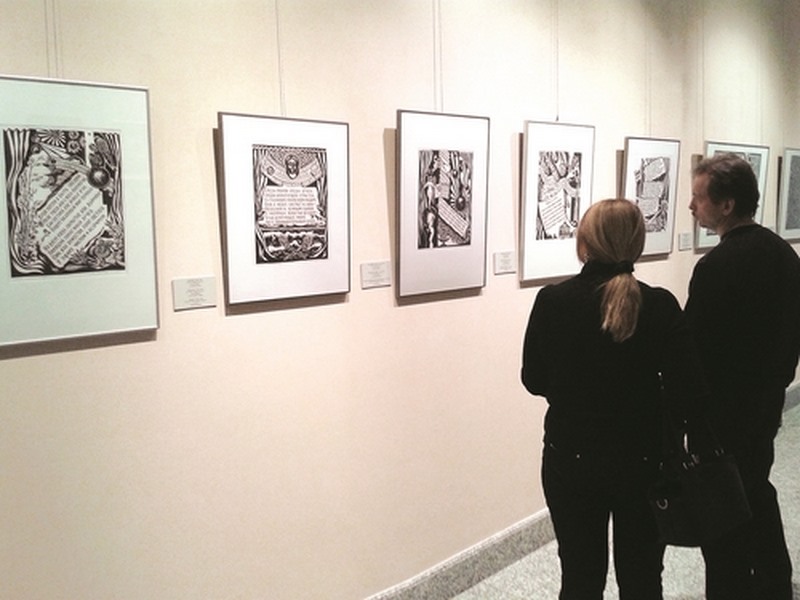
It seems an inevitable outcome, since the artist’s co-ordinates are so clearly set, and have been for so many years. His art reflects his soul in this ever-changing world of trends. Mr. Providokhin remains faithful to his vision, to his spiritual core. This is his Modus Vivendi. His careful attitude towards his legacy and his serving of the arts is also his favourite way to pass his time.
Vladimir Providokhin is a philosopher, which gives him artistic confidence:
Autumn is a time of transition, from one state to another. It’s not a mathematical rhythm or a unification, or a mystery. Rather, it’s a metamorphosis taking place on the outskirts of the Milky Way. My life resembles an island floating free of its continent, sailing in the ocean of the Universe.
We all bear a social responsibility not to hamper others in their pursuit of happiness. If we remembered our own mortality and vulnerability a little more, there would be less evil in the world.
Engravings, pictures, drawings and poetry have a life of their beyond their creators. With the passing of time, we draw, write, shoot films, compose music and stage performances, creating monuments in the sands of eternity. The grains fall and another page is turned, with all beginning anew, including the creation of new texts and works. However, what matters a clever book in the balance of life compared to dew on a flower. The latter represents the whole Universe. Everyone chooses their own path.
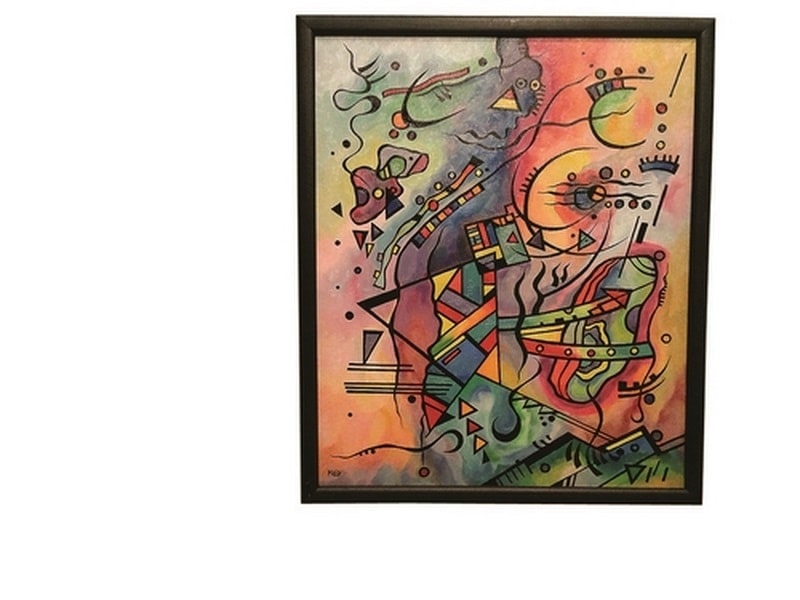
We spend half our life adapting to others around us, fitting to a false note, rather than being ourselves. Age is irrelevant, since our souls belong to eternity and remain ever young, without end or beginning. Our feelings, sorrows, quarrels, envy and faith — everything good and bad — takes us on a path of awareness. We each contain a sparkle of eternal light, being part of our wonderful world. We are travellers in the labyrinth of life and belong to the Cosmos even more than to the Earth, which can hardly be compared to the Cosmos. We weave and tie our knots, while our eyes betray our soul, heart and spirit! They are no empty holes, as in a knight’s helmet.
I was probably lucky in learning to look at myself differently. I was once scared of taking risks but now I’m driven by love, and have confidence.
How interesting it is to ponder these sincere declarations, which are both innovative and traditional. Vladimir Providokhin’s artistry remains impressive, attracting us like a magnet.
By Veniamin Mikheev





















